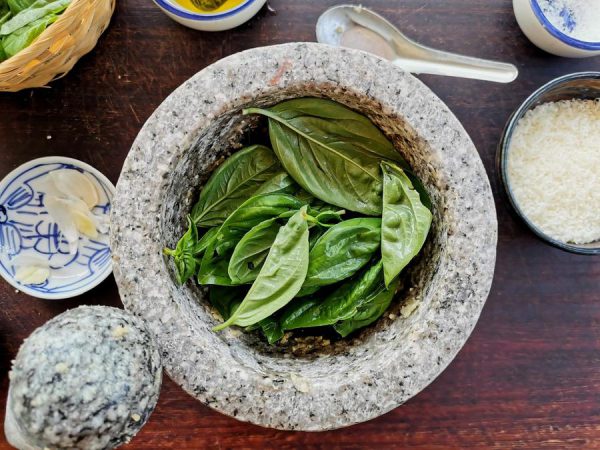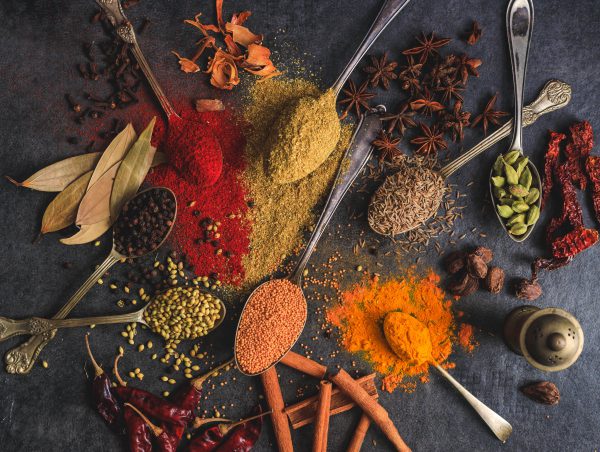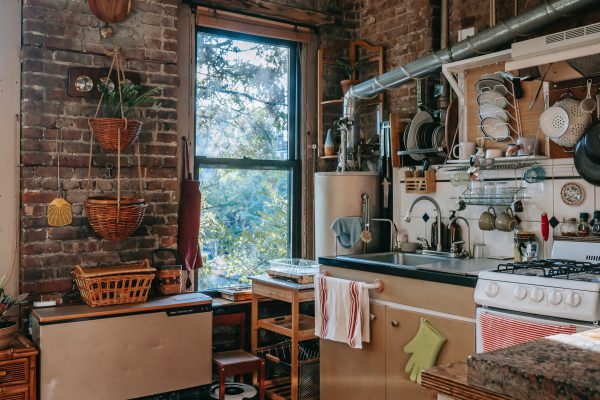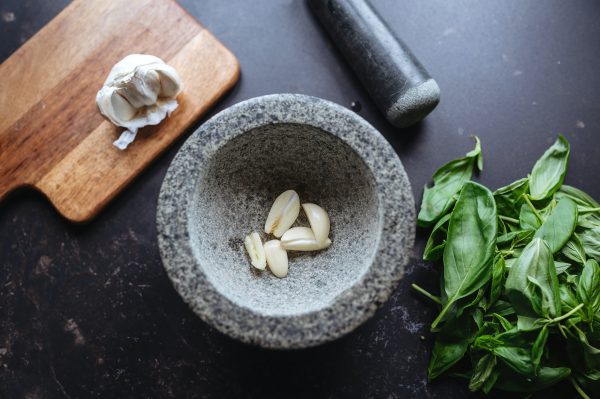Last Updated on February 22, 2023
Being out in nature is a great way to recharge and reconnect with yourself, your family, and your friends. Until everybody starts to feel hungry. And if you don’t have the means to prepare a hot comforting meal, we all know things can go south pretty rapidly. (We’re only half-joking… So, if you want your camping trip to give you peace of mind – and a full belly – keep reading to learn what you need to prepare a hot meal for the whole company with out guide on the top campfire cooking kits.
What to Look For in a Campfire Cooking Kit
No one wants to spend a lot of time preparing a meal when camping when you could be enjoying the outdoors. Therefore, the first thing you need is outdoor pots or pans that heat up as quickly as possible.
A good set of pans should also be easy to downsize and save you some space with its nesting capabilities.
Another thing to consider is the weight of the campfire cooking kit. You see, practicality is the key to enjoying cooking outdoors. For this reason, consider whether you’ll be carrying your cooking kit in your backpack or your car. The more physical activities you’ve planned on foot, the lighter your pots should be.
As a rule, refrain from conspicuously cheap pot sets as they can make outdoor cooking difficult. For example, they are often unstable and might have plastic parts that will melt when you put them on an open fire. If you’re willing to invest a little more, get products that are significantly more durable.
Every type of material has its advantages and disadvantages. Let’s have a look at them one by one so that you know what you need when cooking outdoors.
Cooking Materials and Thermal Conductivity

Different materials come with different degrees of thermal conductivity. The type of cooking kit you need largely depends on what you want to cook on your camping trip. For example, pots with low thermal conductivity are best for soups and liquid dishes but not for meals that cook with little water.
Now that we’ve set up the most important criterium, we can look at the common cooking kit materials in more detail. Since every outdoor enthusiast differs in their cooking needs and practices, there’s no such thing as “the best material.” That’s why we’ll list the pros and cons for the most common ones.
Lightweight and Budget-Friendly: Aluminum
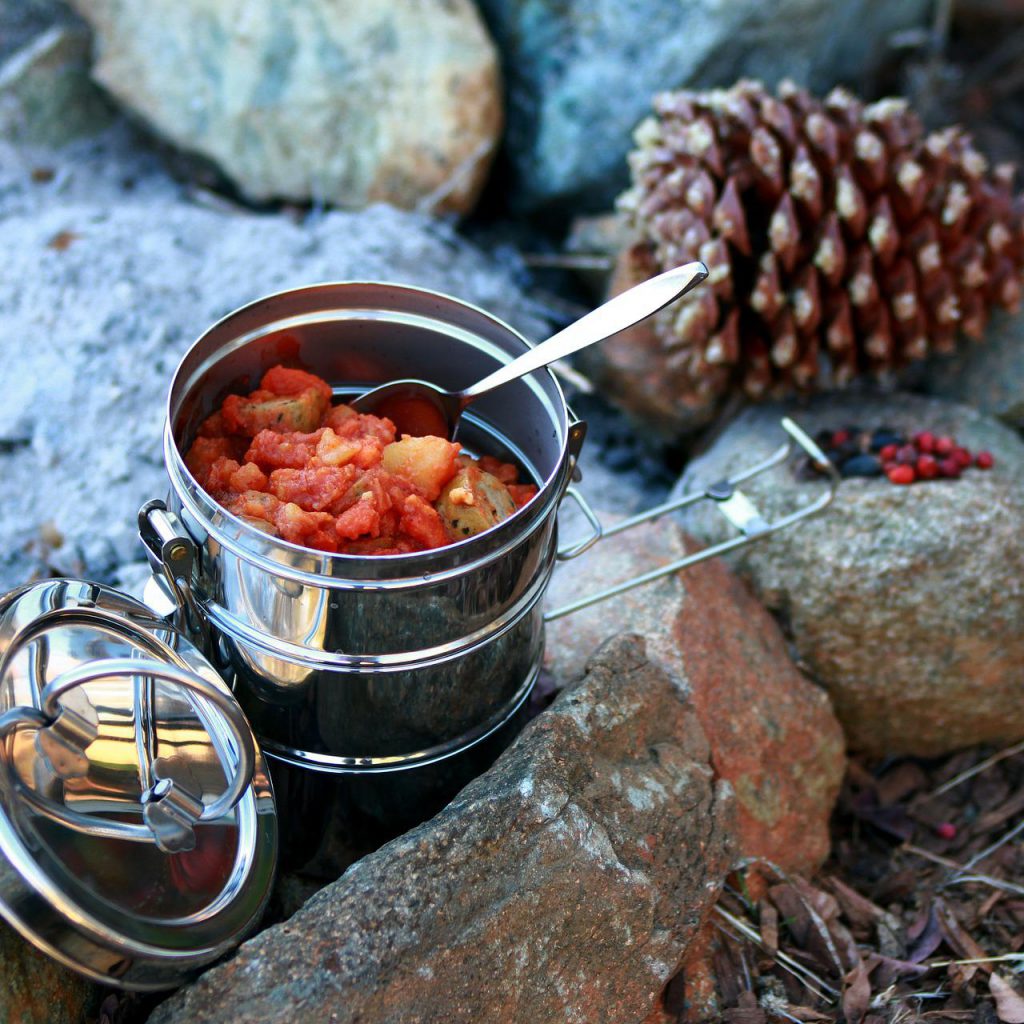
Light, cheap, excellent heat conductor. Thanks to these properties, aluminum pots are one of the most preferred pieces of equipment among camping cookware.
However, they have one major downside – under certain circumstances, aluminum ions can contaminate the food. This happens when you remove its protective layer through continuous washing in the dishwasher. Moreover, most aluminum pots and pans have a PTFE or ceramic coating or an insoluble oxide layer (anodized aluminum). The problem with some of these coatings is that they’re more sensitive to abrasion.
That said, you can avoid these setbacks if you take proper care of your aluminum pots. If you’re worried about damaging your cooking set, you can opt for harder aluminum variants, such as HA (Hard Anodized) aluminum or duossal. Only, this will make the kit a bit heavier and less of an excellent heat conductor.
Generally, aluminum heats up quickly, which is great when cooking outdoors, but it also means you need to consume the food you prepare immediately, as these pots give off heat pretty fast too.
Cooking Like at Home: Stainless Steel

Stainless steel is an alloy that usually has chromium and nickel added to it. It’s the heaviest and most stable among the cookware materials. Naturally, stainless steel pots made for outdoor use are slightly thinner, which reduces their weight a little bit.
Stainless steel is relatively inexpensive, shockproof, rustproof, very durable, and easy to clean. Unlike aluminum, it doesn’t react with any kind of food. These pots usually have a copper or aluminum core that offers reasonable thermal conductivity. However, you need to be extra careful, as the rather poor non-stick properties can result in burnt food if you get too carried away.
Indestructible: Titanium

Titanium provides indestructible stability as a cookware material, but it also comes with a high purchase price. Titanium pots weigh less than stainless steel ones, and their strongest suit is their extreme hardness.
Titanium is highly durable, making these pots almost impossible to bend or break. That’s why the walls of titanium pots can remain extremely thin, leading to a very light end product. The sturdiness of the material goes hand in hand with its scratch resistance and low reactivity with acids.
However, titanium has to be heated to extreme temperatures to be melted — 1668 °C to be precise — which is why titanium pots are so expensive compared to other pots. They’re also not the best heat conductors, but if you tend to forget your pot or kettle on the fire, you can also see this as an advantage.
A titanium pot can stay in the embers or over the flames for a long time without causing damage. Still, the higher fuel consumption is far from ideal if you’re cooking on a gas stove during a week-long camping trip, for instance.
Bonus: How Do You Properly Clean Outdoor Pots?
Camping dishes made of stainless steel or aluminum are best cleaned with a scourer. If necessary, you can mix some fine sand with water to achieve a fine emery effect. However, you need to be more careful with coated pots. These should only be cleaned with a damp cloth, but at least the coating helps the food come out without sticking to the surface.
Regardless of the material, there’s a particularly gentle way to clean pots after each use. You can easily remove most of the residue by boiling water in the same pot when you’re done using it. Then you can wipe it with a cloth or add some lemon juice for that shiny glow.
Top Campfire Cooking Sets
Snow Peak Trek 900 Camping Cookset
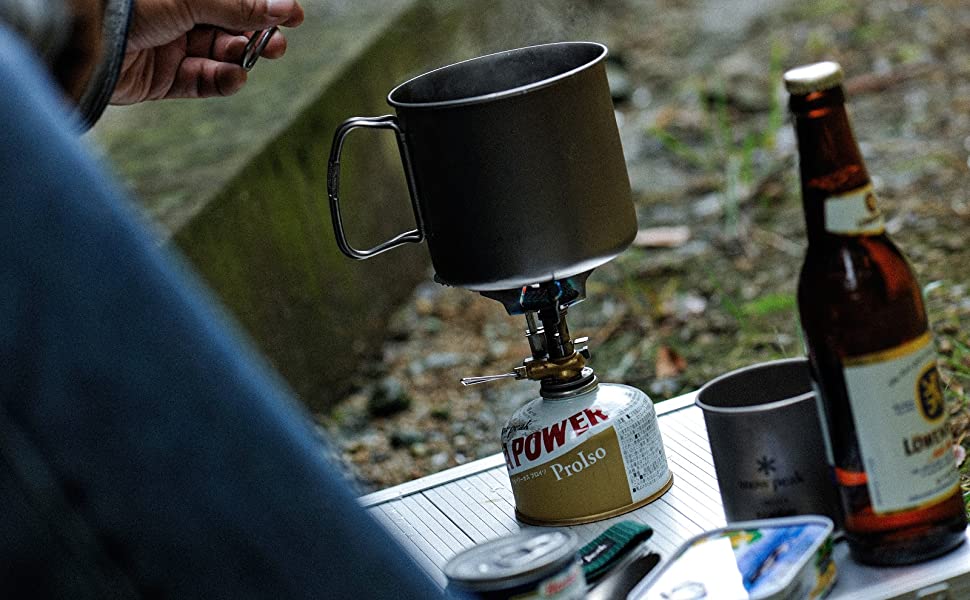
If you are a solo hiker or you camp with people who have their own gear, this minimal set is all you need. The titanium pot and skillet are pretty small in size and ultra-lightweight. The skillet’s handle folds back and sits on top of the pot like a lid. And the pot is only large enough to store a 250g fuel canister, saving you additional space.
If you think you’ll need a bigger set with additional pots and skillets, you can create your own set with Trek 700 and Trek 1400, which all nest inside each other perfectly. Plus, all these sets come with a lifetime guarantee.
The robustness of titanium also comes with lower heat conductivity, which means it takes some time to boil water in these pots. This shouldn’t be a problem when cooking for one, but if you want to cook for two, this set will not be enough, as the pot only holds 24 fluid oz — approximately 0.7 liters.
GSI Outdoors, Pinnacle Camper Cooking Set

If you usually go camping with a group of people, you’ll need more than a small pot and skillet. This Pinnacle set contains all the basic tools you need in a simple, compact way. There are 4 insulated mugs, 4 plates with vacuum lids, 4 bowls, a 3-liter pot with a strainer lid, a skillet with a folding handle, and finally, a sack that doubles as a washbasin.
This well-rounded set is also lighter than it looks. The cookware is hard ionized aluminum coated with Teflon, which makes them light and easy to cook with and clean because nothing sticks. The plates and mugs are made of durable plastic and are color-coded so that everyone knows which plate is theirs. And finally, the heat-resistant lid with a strainer won’t deform even if you leave it over the pot while boiling water.
Sea to Summit X-Set 32
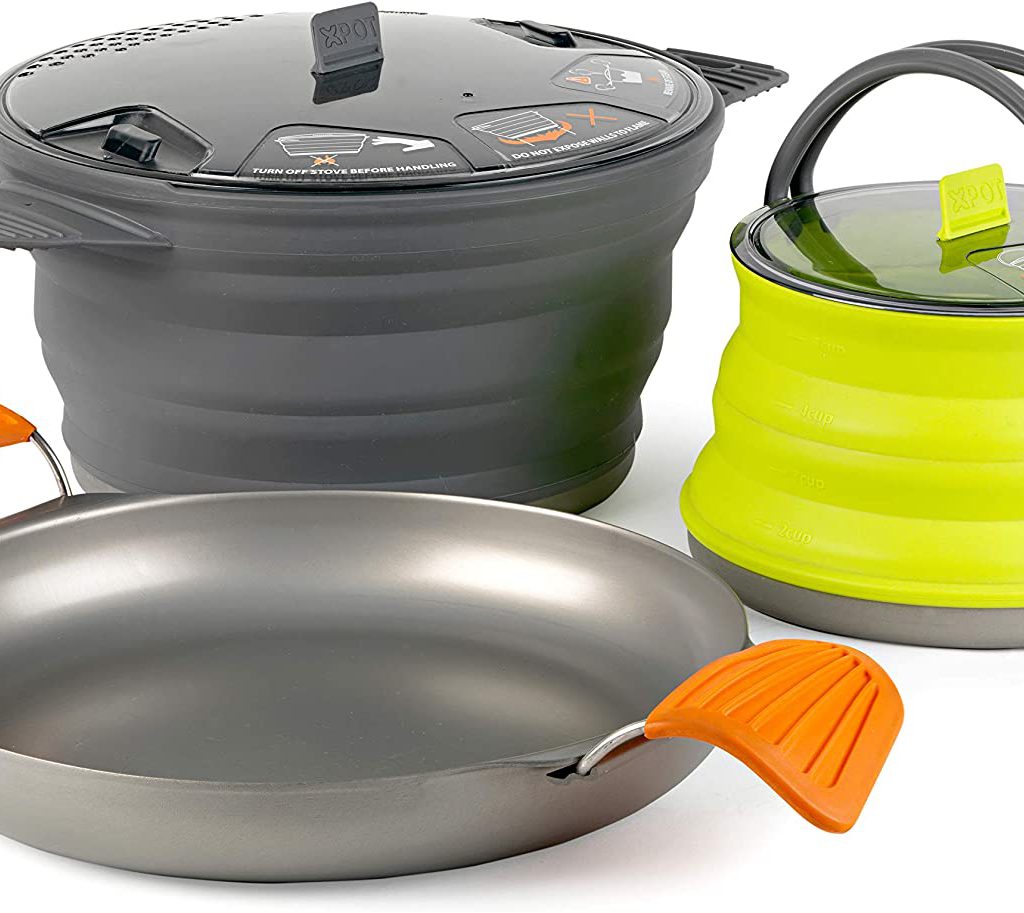
This set includes a 2.8-liter pot, 1.3-liter kettle, a 20 cm skillet, and a twist. You might be surprised when you see the walls of the pot and kettle are made of collapsible silicone, but they endure up to 148C. With bottoms made of hard ionized aluminum, the pots are light and quick to cook with. When you’re done, simply collapse them to let them fit leanly in your backpack. The silicone walls are BPA-free and certified to both FDA and EU food-grade standards.
Sadly, the pot and the kettle are only suitable for water-based cooking, and the whole set is for cooking on nothing bigger than a fuel canister. For frying or sauteing, you can use the aluminum skillet. Its silicone handles to protect your hands from the heat and fold in when you’re ready to pack them.
Even though it’s a bit pricey, the Sea to Summit set is absolutely ingenious, which is why it was the winner of The Backpacker Editors’ Choice award in 2015.
Stanley Base Camp Cook Set
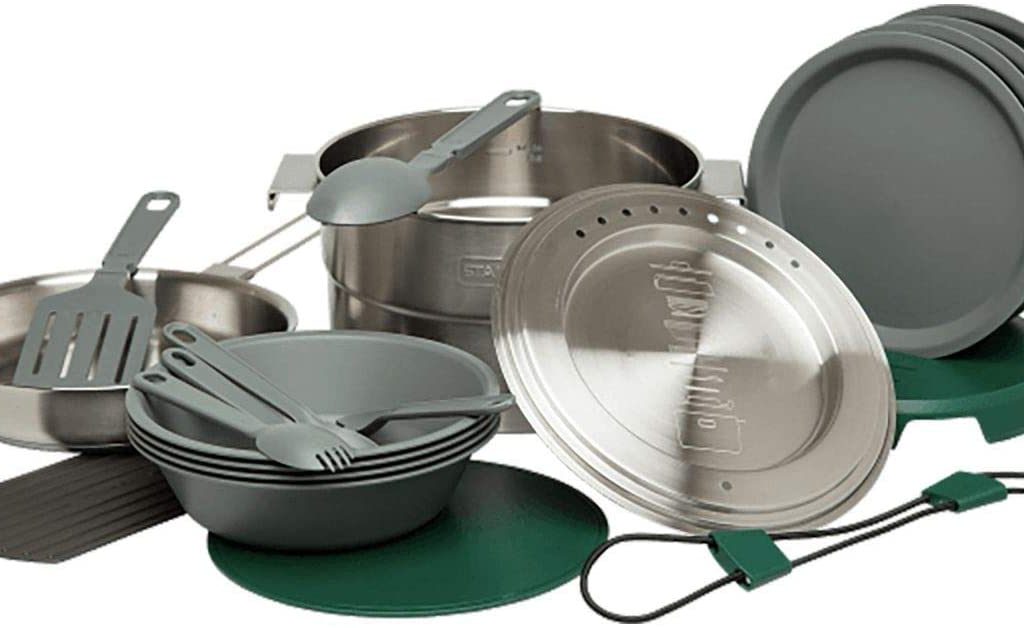
If you want a well-rounded kitchen when you camp, Stanley has the perfect base camp cooking set for you. This set includes a 3.5-liter pot with a vented lid, a 7 inch 3-ply frying pan that distributes the heat evenly, a spatula and a serving spoon with extended handles, a chopping board, 4 plates, 4 deep bowls, 4 sporks, a heat resistant trivet, a drying rack, and a locking bungee to secure the lid over the pots.
The pots are suitable for cooking on both camp stoves and grills. When you’re done, you can pack everything in the pot, and you’re ready to go. The whole pack weighs 2.6 kg, which is quite reasonable for such a versatile kit.
All the metals are made of stainless steel, so nothing will bend, rust, or scratch. You can be sure that the set will serve the whole family off the grid for years to come. Just make sure you put a little oil when cooking so that there are no sticky leftovers to rub off when you’re done.
Bruntmor Heavy Duty Campfire Cooking Kit
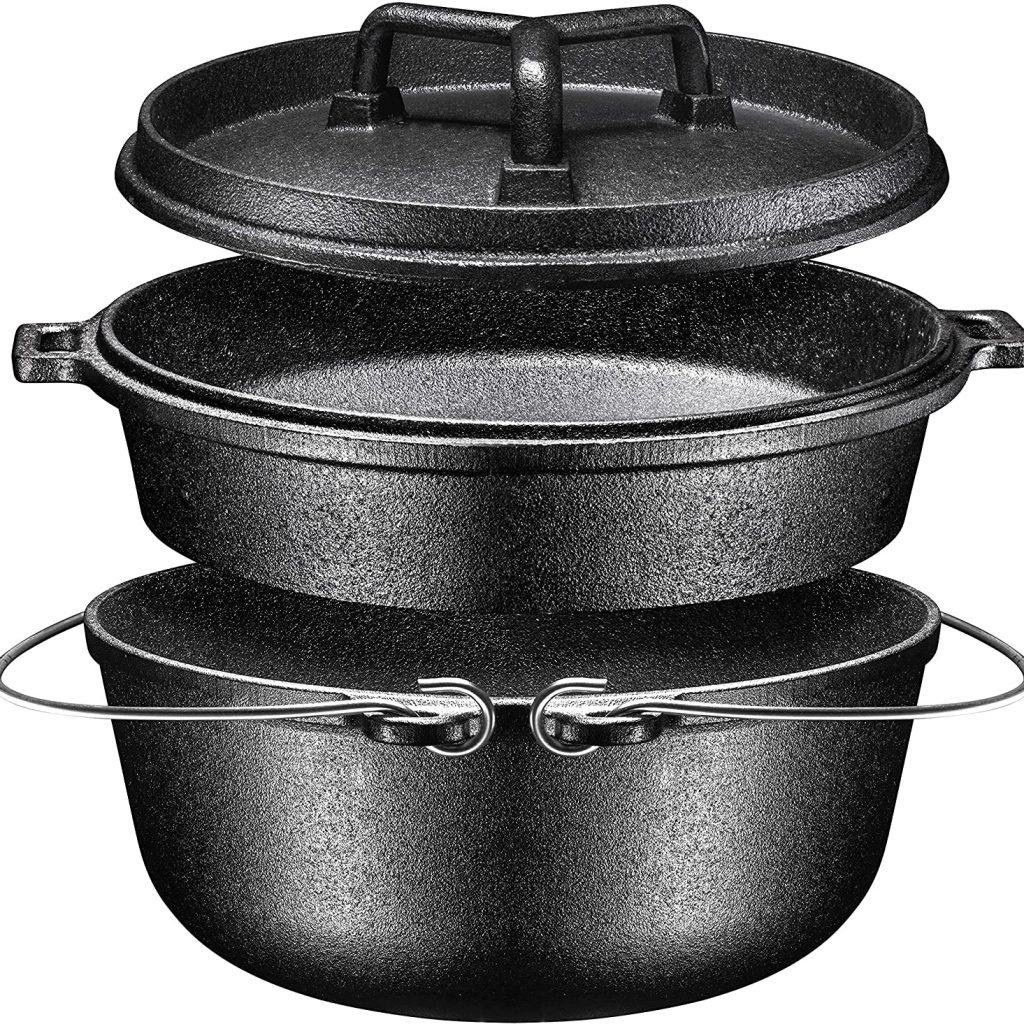
If you’re traveling by car, you can spare some room for some robust camping cookware such as this solid cast iron cooking set. The surface of the cast iron comes pre-seasoned, scratch-resistant, and non-stick. The set includes a stockpot, a frying pan, and a cast-iron lid.
Unlike the other kits, this set isn’t for outdoor use only. You can easily sear, simmer, saute, broil or roast in this set on your stovetop, oven, grill, campfire, or even induction stovetop. The handles attached to the pots let you hang them over a campfire with a tripod, such as the Lodge Camp Dutch Oven Tripod, and have a pioneer outdoor cooking experience.
Over and Out!
Cooking while on a camping trip can easily become one of the best parts of the experience, as long as you prepare for it in advance. Just imagine waking up to a Spanish omelet on your camping trip – yum!
Even though you should never overpack when camping, you mustn’t leave any essential tools behind either. Above, we listed several compact cooking kits that can help you make a quick meal and a cup of tea or coffee.
Alternatively, if you like to travel by car or van, you can treat yourself to a more luxurious kit for the ultimate camping dinner-by-the-fire experience.
Whatever set you get, make sure it’s robust enough to endure the outdoor elements for a long time.


